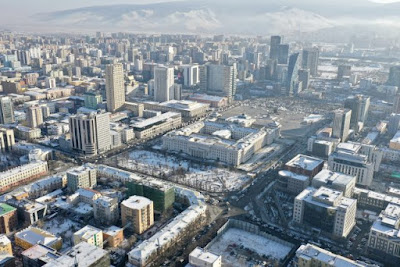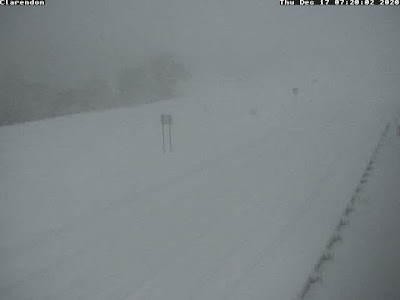 |
| A messy slush/ice mess starts to slide off my St. Albans, Vermont roof a couple winters ago. I'm expecting a similar situation out of the upcoming storm. |
That kind of weather makes going out for New Year's Eve celebrations tricky.
This year, New Year's Eve in Vermont features quiet, and relatively warm weather. Easy peasy to go out in.
Although let's not. We need to stay home this year to limit the spread of Covid. Please DO NOT go out. Skip it this year. Watch it on TV at home, like me and my husband Jeff plan to do. Let's get it together and save lives, people. Being a couch potato is a terrific public health move
That's not to say the new year won't get started with a messy storm. It's tradition in Vermont, after all. It's just running a little late this year. It's not expected to get here until tomorrow night.
All indications are this storm will indeed by a sloppy schmutz fest. At this point, the Green Mountain State will get it all, wet snow, sleet, freezing rain, a little rain and iffy temperatures.
Forecasts for this storm have trended colder over the past several days. Remember a few days ago when I said we were in for another warm rain storm? That's now totally off the table.
It's a tricky forecast, because temperatures will be marginal not only down here on the ground where we live, but through a lot of the atmosphere.
In their forecast discussion this morning, meteorologists at the National Weather Service in South Burlington said they expect temperatures to be right around 32 degrees through a 3,000 foot thick layer of the atmosphere above us.
That means anything could happen. The storm will probably start off as snow, but eventually, there's a good chance that enough warm air will work in to change things to sleet, then freezing rain.
The northern half of Vermont stands the best chance of getting just snow and sleet, with little if any freezing rain. More freezing rain is expected south.
If you melt everything that's expected down, we'll probably get the equivalent of at least a half inch of rain out of this storm, likely more in some parts.
The good news is that since it appears at this point, a relatively low percentage of the precipitation will be freezing rain, we won't have much trouble with trees and power lines. At least that's the way things look now.
The roads and sidewalks no doubt will be terrible, though, Friday night and Saturday.
There's a chance that warmer valleys could change to a cold, plain rain for awhile Saturday before things go back to snow. It'll taper off by Saturday night.
The mess left behind will be hard to shovel. It won't be particularly deep, but the snow and ice will be dense. It'll be like shoveling wet cement, I suspect.
As always, expect some changes to this forecast, since so much could happen if temperatures in the atmosphere go up or down just a couple degrees from predictions.
This is a wide-ranging storm, by the way. It has already dumped several inches of snow in Texas and even in northern Mexico.
There's a real tornado threat with this storm in the Deep South today. Flooding is a good bet from eastern Texas to Arkansas.
And Vermont isn't the only place that expects ice. Freezing rain and sleet will come down in a broad arc from northern Texas, through much of the Midwest and into New England.
Another storm Sunday night will go by to our south, but could spread some light snow up into Vermont.
It will stay on the mild side well into next week, with temperatures running several degrees above normal for this time of year.
























